Spanish Study: Link Between Cement Kilns and Cancer
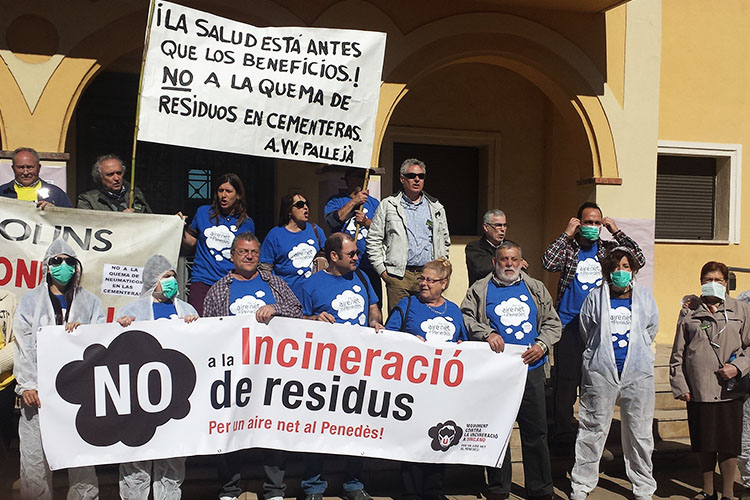 Although it was first published last July, news of a new Spanish epidemiological study of residents living in proximity to cement plants has just now reached us.
Although it was first published last July, news of a new Spanish epidemiological study of residents living in proximity to cement plants has just now reached us.
Done by the the same researchers responsible for a 2012 study that found statistically significant increases in all cancers around waste incineration and auto scrap metal operation, this more recent report focuses just on cement, lime and plaster plants.
According to the researchers, a statistically signifiant increase in all cancer mortality was detected in the vicinity of these installations as a whole, but principally, in the vicinity of cement installations. Specifically, tumors of the colon–rectum in both sexes and of the pleura peritoneum, gallbladder, bladder and stomach in men were noticably higher. In a summary of the results, the authors state they believe residents have "an excess risk of dying from cancer, especially in colon–rectum, in towns near these industries."
Because they take such a long time and so much effort, there's a dearth of epidemiological studies focused entirely on cancer risks among those living in proximity to cement plants, although a 2004 Italian study found a significantly greater risk of lung cancer among people living near a cement factory (whereas the results of another Italian study confirmed significant excesses for cancers like the nervous system, leukemia, mesothelioma and peritoneum in a region with the presence of various industries including cement factories.
In explaining the higher incidence of gut cancers among both men and women, the study hypothesizes about the possible ways local residents are exposed to carcinogens:
In our study, one aspect to be borne in mind is that colorectal
cancer is the only tumor with statistically significant excess risks
in men and women, which might be indicative of a pathway of
environmental exposure. In this case, two possible routes of exposure
to the pollution released by these installations are considered:
direct exposure to pollutants released to air; and indirect exposure,
both to pollutants and liquid effluents which are released to water
and can then pass into the soil and aquifers, and pollutants which
are released to air and then settle on plants. In such cases, the toxins
may pass into the trophic chain, affecting the population.Some authors have already shown associations between colorectal cancer and proximity to industrial pollution sources as metal industries (Garcia-Perez et al., 2010), mining (Fernandez-Navarro et al.,2012), food and beverage sector (Lopez-Abente et al., 2012) andchemical plants (Wilkinson et al., 1997). As regards cement plants,
a Brazilian study found a significant elevation on colorectal cancer
mortality in an industrialized area with cement industries came
into operation in the 1960s, among other facilities (Medrado-
Faria et al., 2001), and a Korean occupational study suggested a
potential association between exposure in the cement industry
and an increased risk of rectal cancer (Koh et al., 2013).
One thing a lot of these overseas studies and the Midlothian area have in common is a concentration of heavy industry. There's usually more than one facility and the region is considered an industrial corridor. That's certainly true of Midlothian, where besides hosting three large cement plants, the town is also home to a huge secondary steel mill, a power plant, and now an LNG plant. These industries combine to present a multitude of possible synergestic combinations of toxins to anyone living adjacent to, or downwind of them. "Toxic soup" is a term often used to describe the result.
This is also why the law lags behind the science in setting standards for cause and effect. When it's the cascade of chemicals from various facilities assaulting you, you're rarely going to be able to link a particular disease or illness with a specific plant. And yet the harm is happening all the same. This is why institutionalizing the "Precautionary Principle" into public policy is so important. It's much easier to prevent a chemical exposure than to track all of its ill effects after it's already doing damage.
Another Reason to Hate K-Cups: They Could End Up in Your Lungs
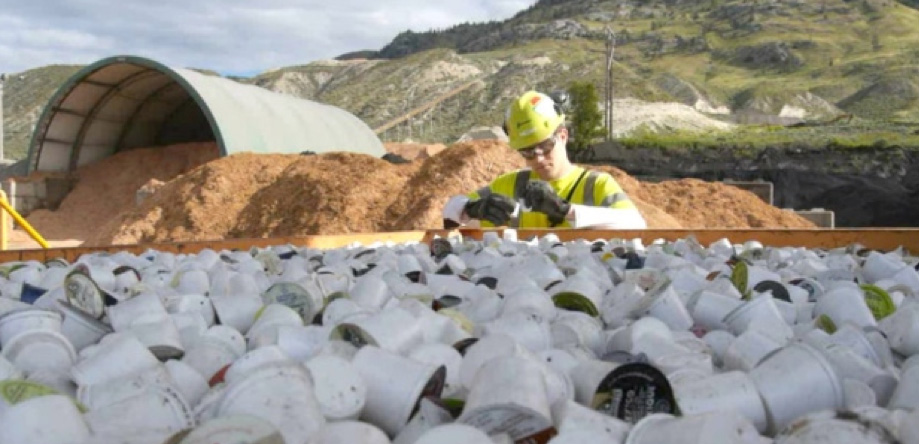 A new frontier in "alternative fuels" for cement kilns has opened up. A LaFarge cement plant in British Columbia has begun burning used plastic single-serving Keurig coffee cups, otherwise known as "K-Cups."
A new frontier in "alternative fuels" for cement kilns has opened up. A LaFarge cement plant in British Columbia has begun burning used plastic single-serving Keurig coffee cups, otherwise known as "K-Cups."
The cups aren't recyclable because they're a mixture of coffee grounds, paper filter, plastic cup and foil top that can't be efficiently separated.
The plant's manager says that the cups are "becoming more and more of a component of our waste steam." A chain delivers the spent cups in large bins. in 2014, over 80,000 pounds, or 1. 4 million, of them were burned at the plant.
Of course, LaFarge claims that the cups are "completely combusted." No mention of the increase in Dioxins/Furans, Polyaromatic Hydrocarbons, or other carcinogens created when the plastic is burned and complete combustion isn't do complete.
K-cups are just the latest piece of "unrecyclable plastic" to be added to the waste stream pouring into cement plants all over the planet. Although the use of hazardous waste as fuel has declined since the 1990's, the use of "industrial wastes" has soared as plants try to find free or subsidized sources of fuel to take the place of coal. Fuel costs are as much as a third of the operational expense of running a cement plant.
Although this new trend hasn't been embraced by Midlothian's three cement plants yet (as far as we know), the permits for TXI and Holcim allow the burning of plastics (along with a host of other industrial wastes), so it's conceivable a K-Cup bonfire could be coming to a kiln near you soon.
A report in February by the group As You Sow, specifically identified the food industry as a large generator of unrecyclable plastics. And one of the biggest culprits it spotlighted was the K-Cup, of which 9.8 billion were produced in 2014 alone. That's enough to circle the globe ten times with the small plastic shells. The Cup's waste is so ubiquitous that it's creator is now said to regret he ever invented it.
One media outfit began using the Cups but then "very quickly realized that this packaging was a problem." So Egg Studios produced a short "Cloverfield" parody where the plastic cups become the weapons of choice for an alien invasion. It's called "Kill the K-Cup.
Even a Single Day of Air Pollution Increases Stroke Risk
 When environmental health advocates speak about the dangers of dirty air, the effects are often categorized as long term and cumulative. But the more scientists delve into the subtleties of the human body and what outside influences can do it, the more they realize that even short term exposures can be harmful. That's been especially true lately when looking at pregnant moms and the exposure to fetuses in certain stages of development. Not it turns out to true when looking at the other end of the age spectrum.
When environmental health advocates speak about the dangers of dirty air, the effects are often categorized as long term and cumulative. But the more scientists delve into the subtleties of the human body and what outside influences can do it, the more they realize that even short term exposures can be harmful. That's been especially true lately when looking at pregnant moms and the exposure to fetuses in certain stages of development. Not it turns out to true when looking at the other end of the age spectrum.
A new examination of 103 studies involving 6.2 million stroke hospitalizations and deaths in 28 countries published online at the BMJ (British Medical Journal) found that almost every type of industrial air pollution contributed to a higher risk of stroke. And the higher level of exposure to the pollutant, the higher the risk of stroke.
Increases in the levels of Nitrogen Dioxide, Sulfur Dioxide, Carbon Monoxide and fine Particulate Matter were all associated with increases in strikes and hospitalizations. Not surprisingly, the strongest correlations were on the day of actual exposure, but the effects of PM, otherwise known as soot, were longer lasting. Missing from the list is ozone, or plain old smog, which studies have shown increases asthma and heart attacks on its own.
According to the report, strokes account for five million deaths worldwide every year and cause en even greater number of disabilities.
The lead author, Dr. Anoop Shah, from the University of Edinburgh, said that there was little an individual can do when there's a bad air day going on but stay indoors
“If you’re elderly, or have co-morbid conditions, you should stay inside,” he said. But policies leading to cleaner air would have the greatest impact, he said. “It’s a question of getting cities and countries to change.”
The Last Frack Fight?

In Austin, the HB 40 hearing started late and continued far into the night. In Mansfield, the third reading of the new ordinance with the old setbacks was following the script. Between the apocalyptic tweets emanating from the one and the dismal Kabuki theater playing out in the other, it was hard to tell. Was this the beginning of the end, or the end of the beginning?
If the Texas legislature has its way, the long hard two-year slog from outraged neighborhood to fourth (or was it the fifth?) revision of the city's gas drilling ordinance that concluded at the Mansfield City Hall Monday night might be the last Old School Home Rule fracking fight the Barnett Shale sees for some time. But unlike, Southlake, or DISH, or Dallas, this one didn't end with unqualified victory for the residents.
Timing is everything, and the Mansfield fight was peaking at exactly the wrong time with the wrong group of timid elected officials. Before Denton, and the Banshee legislative session of 2015, it might have been possible to get longer setbacks. But now, it was out of the question. The City Council was unanimous in its reluctance to piss off Austin any further by extending a buffer zone past 600 feet, or pass something for the hell of it that would be repealed in a matter of months anyway. There was way more discussion and debate over a proposed assisted-living facility than the proximity of another 300 gas wells to 50,000 people.
For almost two months, the industry had been pushing back hard, with telephone campaigns, Astroturf websites, and industry reps parachuting into nearly every Chamber of Commerce and business association meeting. Trade associations pumped money into the fight like their collective lives depended on it. And maybe they did. Mansfield is in Tarrant County, the Belly of the Barnett Shale Beast, and in territory it thought it had bought and paid for years ago. The very idea!
Which makes what Mansfield Gas Well Awareness did over the last year that much more remarkable. It clawed its way into the city council's agenda after being blown off with promises they'd be "no fracking on Sundays." It kept the issue in front of City Hall's face until the council agreed to revise the ordinance again. It did that with a handful of people, lots of determination, and no money. In Ed Ireland's backyard, they took on the gas industry and kept getting further down the field.
And so while Monday was a disappointment compared to the goals of the original campaign, in many respects, it was also a draw. Despite all the money spent by industry, supporters of a stronger ordinance with longer setbacks turned out in equal number to the line-up of realtors and royalties owners who liked things just the way they are.
Mansfield kept is archaic 600 foot setback, a relic from 2008. On the other hand, for the first time anyone could recall, there was a provision added that requires the notification to potential homebuyers within 300 feet that they're moving into close proximity to a gas well. That's important. An educated homebuyer is the movement's best friend. Other cities should expand on this concept of notification – especially since it may be one of the only ways left soon to influence the industry at the local level. Call it the Right-to-Know Who Your Industrial Neighbors Are.
And while the city council voted against them, one of the rank and file of Mansfield Gas Well Awareness is now running for council. Tamera Bounds declared her candidacy in late February. She's taking on long, long, long time incumbent Cory Hoffman. A victory by Bounds would send a strong message to City Hall that the reactive form of regulation it now favors isn't proactive enough.
One of the most interesting things about Monday night was the rhetoric deployed by either side. Because Mansfield has over 200 wells already, there was no shortage of anecdotal information about wells gone wrong or what living next door to one was really like. Many of the supporters of longer setbacks talked about their own first-hand experience. The ones who didn't do that spoke with first hand knowledge of reading specific studies and the survey of peer-reviewed, journal-published scientific literature now available. It was all very fact-based. Here's what I saw/smelled/breathed. Here's what I read.
What was funny was that the canned speeches from industry accused them of using scare tactics (Science! Experience!) and importing ideas from Russia (seemingly unaware that the former Soviet Union is now in vying with Texas for world headquarters of crony capitalism). Presentations by the proponents of the status quo talked about how sacred property rights are in Texas and America, how everything is awesome with the city, and how everything would be terribly un-awesome if there wasn't gas drilling. But they never cited one study, never mentioned a statistic, or related how research was proving them right about the safety of proximity to wells. Any objective literary comparison would find all the scare tactics and exaggerated rhetoric unmoored to any scientific facts coming from the side that was accusing their opponents of using this very approach. Ironic, huh?
You'll also be glad to know that, according to Mr. Ireland, the gas industry produces "no air pollution," so those numbers (97 tons per DAY of Volatile Organic Compounds and Nitrogen Oxides) in the last state air plan that placed gas facilities as the single largest non-mobile source of smog-causing pollution in DFW were just, you know, numbers – as opposed to his more authoritative assertions). Lucky for Ireland the industry still has so much money to spread around to sell its case. If it's ever left up to his intellect alone, it's in big trouble.
At the conclusion, you kept asking yourself if that's all they had? Boiler plate "you're a socialist" dribble combined with climate change-like denial of the scientific research. It's all flag and dollar waving. But in March of 2015, in Mansfield, Tarrant County, Texas, it was enough to deny another 900 feet of protection to residents.
Back in Austin, Energy Resources Chairman Drew Darby's own bill drew 100 plus speakers, many from Denton and other cities that had already had their fights. The Texas Municipal League said over 300 Texas cities wouldn't be able to enforce their own gas drilling regulations if HB 40 became law. No new ordinances would be allowed.
In the past, you wouldn't expect such an extreme piece of legislation to pass, except it's 2015, the two-thirds rule, and Wendy Davis, are gone in the Senate, even some "liberal" Democrats are being enticed by industry money, there are no such things as moderate Republicans anymore, and oh, yeah, Denton. Has there been another single college town since Berkeley that set off more over-the-top reactionary alarms?
And so it's possible that the final unsatisfying unanimous vote in Mansfield on Monday night could be the conclusion to Texas' last local fracking fight. Beginning of the end, or end of the beginning?
The Politics of Smog, in the US and Texas
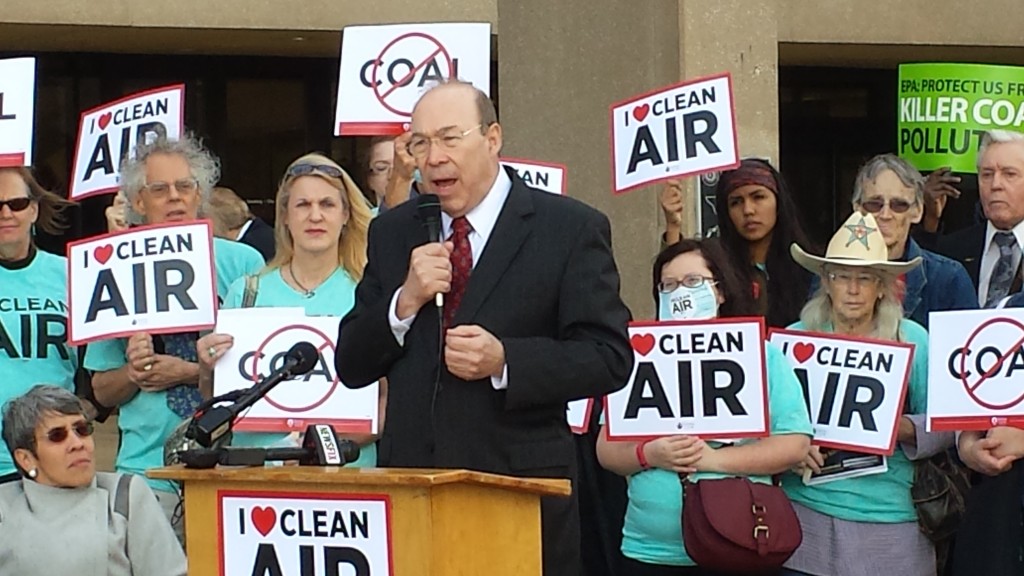 One of things about basing your health or exposure standards on science is that as research gets more sophisticated, the standards tend to get revised, usually downward. The more you know about how a substance affects the human body, the more subtle the health effects you discover. This has happned most spectacularly with substances like lead and benzene, but it's also happened routinely with smog, or as it's know in government regulations lingo, ozone.
One of things about basing your health or exposure standards on science is that as research gets more sophisticated, the standards tend to get revised, usually downward. The more you know about how a substance affects the human body, the more subtle the health effects you discover. This has happned most spectacularly with substances like lead and benzene, but it's also happened routinely with smog, or as it's know in government regulations lingo, ozone.
Unlike those other chemicals and substances however, the Clean AIr Act says standards for ozone exposure must be reviewed every five years to see if they're keeping up with the science. Standards must be protective fo public health. If new research discovers they're not, then they must get lowered. It's one of the most progressive and pro-active enforcement mechanisms that was included in the Act in a series of 1991 amendments.
As a result, in the past 20 years, the levels of ozone that were believed to be "safe" have come down dramatically as the science has gotten better. In the mid-1990's, an area wasn't out of violation unless it had over 125 parts per billion (ppb) of ozone as a one hour average. Dallas-Fort Worth more than matched that level, sometimes seeing one-hour readings as high as 135 ppb an hour. North Texas was out of compliance with the standard the moment it was passed.
As more research was published, scientists saw health effects at lower levels of smog exposure and so the standard was changed, as well as how it got measured. in 1998, the one-hour standard was tossed out and an eight-hour average began being used to reflect more realistic exposure patterns. And instead of 125 ppb, the number came down to 85 ppb.
Since 2006, the EPA panel of independent scientists in charge of those five year reviews mandated by the Clean Air Act have been concluding that the standard needed to come down to an eight-hour average of 60 to 70 ppb. But politics has interfered twice in trying to reach that goal. During the last Bush Administration it was brought down to only 75 ppb, where it stands now, and immediately before the 2012 elections, the Obama administration delayed another review that might have brought a lower number.
Now the process is cycling back and once again the EPA's own panel of researchers has recommended an ozone standard of 60 to 70 ppb. The EPA is said its looking at a range fo 65 to 70 ppb. Because the regulations haven't caught up with the science yet, it means, according to a new series of articles published by the Center for Public Integrity that,
"… people in a wide swath of the country breathe air that doesn’t violate any rules — and thus doesn’t trigger any warnings — and yet, according to research, is unhealthy."
There's no better example than DFW to demonstrate this behind-the-curve approach. Even while the state is in the final stages of submitting a new clean air plan for the region aimed at reaching the Bush Administration-era 75 ppb standard (by doing nothing but waiting for cleaner federal gasoline mandates to kick-in) the EPA acknowledges that number is obsolete and should come down to protect human health. Yet the state isn't penalized for not aiming lower, and isn't rewarded for reaching a lower number sooner than the deadline of 2018. The two tracks of regulation never intertwine, as if they were regulating two different kind of air pollution. In effect, government is blessing another half decade of unhealthy air in DFW.
Despite this lenient strategy it will come as no surprise that the State of Texas is fighting the current proposed revision downward in the ozone standard. It's at least consistent. Texas has always fought the lowering of the smog standard. Had it been up to Austin, we'd be living with the 125 ppb levels of 20 years ago – the smog equivalent of smoking two packs a day. As part of its look at the politics of ozone, the Center for Public Integrity's journalists spotlight the the Texas Commission on Environmental Quality's efforts to use industry researchers to make its case the standard is just fine where it is. One of the few pieces of good news is the involvement of local physicians with the Dallas County Medical Society stepping up and taking on Austin over its stance. Dr. Robert Haley of UT-Southwestern has become a well-known opponent of the TCEQ in his and the Medical Society's battle over the East Texas coal plants.
As the Center's articles indicate, court battles are an inherent part of the fight for better standards. Often environmental groups have had to sue the EPA to get the agency to implement the standards recommended by its own panel of scientists. Often, the EPA like it that way, because then it can say it was forced to lower standard by the courts instead of on its own. In Texas, with the submission of a state plan for DFW smog that many feel doesn't meet the Clean Air Act requirements for new controls, a court challenge could be facing the the EPA for the first time in a long time if it approves Austin's lax approach to providing safe and legal air to over six million residents.
The Center's articles are required reading for anyone trying to understand how the machinery of government works both to advance and retard the protection fo public health from a very basic threat. For DFW citizens, they could be a primer for an upcoming fight.
Mansfield Misdirection: Med Waste Hype vs. Gas Industry Reality
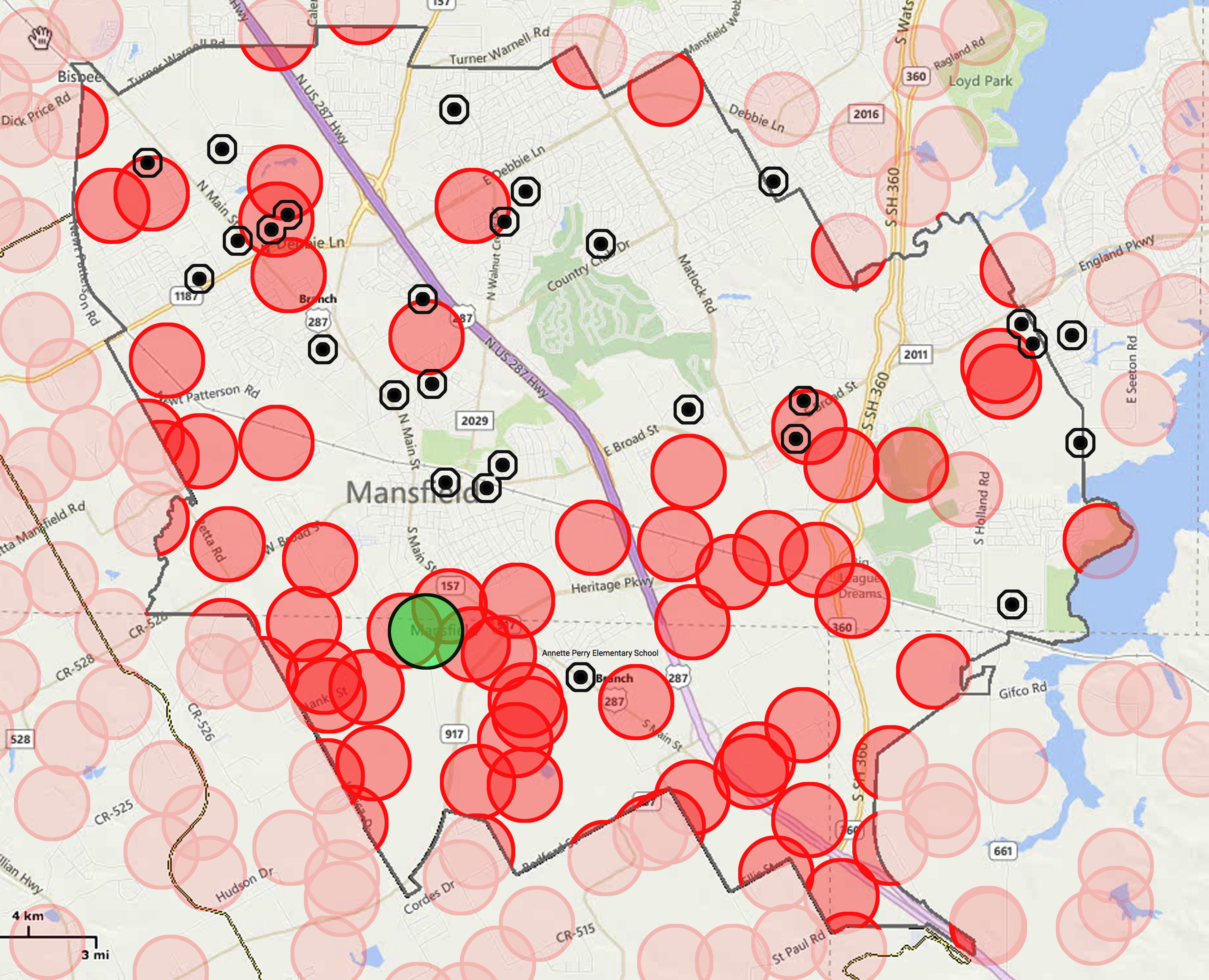
The green dot is a 1500-foot radius around a medical waste transfer station. The red dots are 1500-foot radiuses around gas wells. The black dots are schools. Guess which dot the City Council and School Board are outraged about?
2nd Reading of Proposed Gas Drilling Ordinance
Mansfield City Council Meeting
Monday Night, March 16th 6:30 pm
City Hall, 1200 E. Broad Street
In the art of slight-of-hand, there's a classic maneuver called misdirection. It's when the trickster forces the attention of an audience to focus on one thing in order to distract its attention from another.
In 2015, the largest, most egregious act of political misdirection in North Texas is taking place in Mansfield. With its 60,000 residents surrounded on all sides by 200 plus gas wells, emitting tons of toxic air pollution in the middle of residential neighborhoods, and next to schools and parks, official outrage is focused on the siting of a single medical waste transfer station that will release…no toxic pollution at all.
Oh, the Redaway transfer station application has lots of salacious wording. It will take in tons of "animal waste, bulk blood, bulk human blood, bulk human body fluids, microbiological waste, pathological waste, sharps, and other health care-related items that come into contact with body fluids and/or blood) and non-hazardous pharmaceuticals." Nasty stuff. But it will take this waste, put it in one of three large steam autoclaves, sterilize it, and ship it out to be buried at municipal solid waste landfills elsewhere. All inside an enclosed structure. This isn't a disposal facility. This isn't an incinerator. It's a place where medical waste comes in, gets Martinized, and then gets shipped back out.
But wait, there's tons of storage and up to 50 trucks a day of come and go traffic. What if this is near a neighborhood or upwind of schools? You'd want this kind of facility far away from people. Like in an area zoned for industrial uses. Which it happens to be located in. The nearest school is over a mile away, the nearest residential neighborhood almost as far.
Yet even this distance is way too close for comfort for the City Council and School Board. They don't even want the transfer station in the city limits. For these officials, there's no setback far enough to be safe from the dangers of escaped body parts. They're outraged. They've passed resolutions condemning the facility. They've even protested to the Texas Commission on Environmental Quality!
What exactly is the public health threat posed by the transfer station? It's not air pollution. The steam autoclaves emit so little pollution they aren't even required to have a permit. Nor is it water pollution. Everything drains into the city sewer system. It's the perceived threat of icky stuff like body parts and animal wastes and the accidental contamination from HIV-infected needles that fall off the trucks. In an industrial park. A mile away or more from the nearest school or neighborhood. Behind a fence, inside a building.
Meanwhile there are 206 gas wells strewn throughout the city, emitting half a ton, a ton, or maybe more air pollution a year depending on the age, design and activity. Carcinogens, Mutagens, Endocrine Disrupters. Many of these wells are within 1500 feet of neighborhoods and schools. Some are within 600 feet – the current setback required by the city. Some schools and neighborhoods are within 600 hundred feet of multiple wells. These wells routinely release toxic pollution. These wells pose a threat of accidental release or explosion or fire.
Taking a conservative estimate of half a ton of pollution a year, these 206 current wells could be releasing over 100 tons of air pollution a year. But 300 more are planned too. That's another 150 tons of air pollution. And that's not even counting the compressors, dehydrators, tanks etc. that go along with having that many wells in your town. 250 tons of air pollution is a lot.
So let's review. According to the Mansfield City Council and the Mansfield School Board, even though there are no emissions, and no disposal activity, and it's located in an industrial park, there's absolutely no appropriate distance between the medical waste transfer station and any neighborhood or school in the city. 600 feet, 1500 feet, 5280 feet – it doesn't matter. There is no such thing as a safe buffer zone from this facility. Zero tolerance.
On the other hand, 600 feet is more than a safe distance for proximity of neighborhoods and schools to heavy industrial activity that drills deep holes in the ground, pumps thousands of gallons of toxic chemicals into those holes under pressure, forces underground explosions and then tries to contain and process the resulting releases of gas and liquid coming back up through those holes. 600 feet is OK for constant exposure to toxic chemicals at "low levels." 600 feet is an appropriate distance in case of serious accident, because you're only dealing with highly flammable and explosive substances, not gross human blood.
Now, the more cynical among us would claim that this official misdirection is due to the fact that the city, school system, and property owners aren't getting a percentage of the tipping fees for the tons of waste passing through the transfer station the same way they're getting royalties from those hundreds of gas wells. Take the money out of the gas wells and they might not be allowed so close to people. Let the medical waste station cut property owners in on the action, and it too might be welcomed as a jobs creator.
But by any objective test of current and potential threat, gas wells trump the medical waste facility. Just one gas well pumps more pollution into the atmosphere in a year than the transfer station will in a decade.
On Monday night the Mansfield City Council will have its "second reading" for its proposed updating of the town's gas drilling ordinance. Concerned residents will continue to push for longer setbacks from homes and schools than the existing 600-feet the new ordinance reaffirms. They aren't asking to kick gas wells out of the city, the way the city is with the transfer station. They're just asking for the same level of protection afforded other North Texas towns like Dallas, Southlake and Flower Mound.
Setbacks are crucial because they're one of the few proactive measures that can be taken to avoid harm from a gas well or compressor, rather than reacting to it after the fact.
Longer setbacks prevent as many people from being exposed to as as much pollution, both routine and as a result of accidents, leaks and "blowdowns." The more distance there is between people and heavy industry, the fewer risks to public health. Fewer respiratory problems. Fewer nose bleeds. Fewer cancers. Fewer birth defects. Longer setbacks are a reasonable response to the science in 2015.
But the city and school board are holding fast. Zero tolerance for body parts. 600 feet for toxic pollution. That's why it's important for concerned residents to show up on Monday and call BS on this hypocrisy.
During the month long Ebola panic in the U.S., not one citizen died of the disease that dominated the headlines. However, if statistical evidence from the CDC is to be believed, probably close to 600 people died from the flu during those same four weeks. Which was the greater public heath threat?
There is something truly frightening in the medical waste application. It's the breakdown of land use within Mansfield. As it turns out, the city is "28.6% residential , 3.7% commercial, 3.7% industrial and warehouse, 4.9% parks, 4.3% public/semi public, and 13.3% gas wells and rights-of-way." Gas drilling now takes up more land use in Mansfield than all the commercial, industrial and park property combined. With 300 more wells to go, the city is looking more and more like a large industrial park with pockets of residential development instead of the other way around.
But don't worry about that. Be concerned about the building in the corner of the industrial park steam-cleaning blood, needles and body parts.
Are Environmental Causes Behind a “Pandemic” of Child Brain Disorders?
 Anecdotally you may have heard commentary from a friend about the large numbers of kids in their child's age group who seem to have something wrong with their brain – ADHD or Autism for example. Turns out, there's some solid statistical evidence those conditions are on the rise.
Anecdotally you may have heard commentary from a friend about the large numbers of kids in their child's age group who seem to have something wrong with their brain – ADHD or Autism for example. Turns out, there's some solid statistical evidence those conditions are on the rise.
According to the U.S. Centers for Disease Control, almost two million more children in the U.S. were diagnosed with developmental disabilities in the mid-Oughts than in the mid-1990's. This same decade saw autism climb nearly 300 percent, while that of attention deficit hyperactivity disorder increased 33 percent.
In total, the CDC concludes that 10-15 percent of kids born in America have some type of "neurobehavorial development disorder" and many more were have milder afflictions that don't necessarily rise (yet) to the level of an official diagnosis. These rising numbers are why some leading researchers are saying we're experiencing a "pandemic" level of child brain disorders.
Genetics are believed to account for as much as 30-40 percent of that increase (whether it's genetics or "epigenetics" isn't examined). However, study after recent study also suggests that environmental exposures play a significant role.
Last month, Journalist Elizabeth Grossman wrote about the insidious impact of toxins on the brains of children, either while they're still in the womb or in their early years as their brains are still developing. She describes both indoor and outdoor exposure pathways that offer a multitude of opportunities for kids or pregnant mothers to be exposed to chemicals that can have both subtle and profound impacts on brain behavior.
There are the bad ones we know so much about but can't seem to eliminate from the marketplace, like lead, that still turns up in plastic "softeners" and imported paints. But there's also the threat that grows from fine particulate matter with almost every new research effort published, as well as more ubiquitous chemicals used in fire retardants (PBDEs) plastics (BPA and phthalates), and "perfluorinated compounds" used in stain resistant coatings and pesticides.
Only since the 1980's have scientists realized how much more vulnerable the brains, and hormones, of kids are to the impact of toxins. Even "low levels" of exposures at the wrong time in fetal development can have big consequences. One research is quoted by Grossman as saying that "timing determines destination."
In terms of air pollution, there are now numerous studies linking Particulate Matter (PM) pollution to Autism, including one published as recently as December from the Harvard School of Public Health showing that mothers exposed to high levels of the pollution were twice as likely to give birth to children diagnosed with the disorder.
Pregnant moms exposed to high levels of Polycyclic Aromatic Hydrocarbons, or PAHs – another by-product of burning stuff – were five times more likely to raise children with Attention Deficit Hyperactivity Disorder according to a recent study published by Columbia University's Mailman School of Public Health.
When you combine these air pollution threats with the retardants on the furniture we buy, the residues of pesticides on the food we eat, and the plastics we eat and drink from, the world looks like a very hostile place for developing minds.
No matter the exposure pathway, the problem is the old familiar one of an outdated and slow-moving regulatory system dealing with a marketplace where thousands of new chemicals are introduced without proper health screenings for fundamentals like cancer, much less their more subtle impacts on children's brain development. The ability for chemicals to cause harm is outracing the mechanism in place to prevent them. We're still reacting to being poisoned instead of being proactive about preventing it.
Study: Less Smog Means Healthier Kids
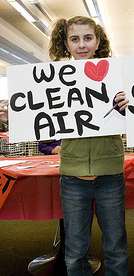 Up to this point almost all studies about air pollution have tracked increasing levels of air pollution with decreasing levels of health. Respiratory problems, strokes, heart disease, Autism, Parkinson's-like symptoms – they've all been linked to exposure to high levels of air pollution vs exposure to less severe air pollution.
Up to this point almost all studies about air pollution have tracked increasing levels of air pollution with decreasing levels of health. Respiratory problems, strokes, heart disease, Autism, Parkinson's-like symptoms – they've all been linked to exposure to high levels of air pollution vs exposure to less severe air pollution.
Now, comes a new study that approaches the problem from the opposite end of things. It associates healthier kids, specifically, increased lung capacity, with cleaner air over time in Southern California. It provides much needed evidence that pollution controls mandated by the Clean Air Act over the last 40 years have had their intended effect and improved public health.
On Wednesday, the results of the effort were published in the New England Journal of Medicine by researchers from the Keck School of Medicine at the University of Southern California (USC).
Over two decades, researchers at USC studied air pollution levels as they declined in five smog-plagued local communities, while also measuring breathing capacity in 2,120 school children from those same communities during three separate time periods: 1994-1998, 1997-2001 and 2007-2011.
The last group of kids tested showed improved lung growth of about 10% between the ages of 11 and 15, compared with children at the same age in 1996. Overall, the percentage of children with abnormally low lung function at age 15 dropped from nearly 8% in 1994-98, to 6.3% in 1997-2001, to just 3.6% in 2007-11. The positive effects were observed in boys and girls, and regardless of race and ethnicity.
This increase in lung function tracks with improvements in air quality in the LA Basin. According to the ALA, despite a higher population and more cars, Los Angeles had 68 fewer high-ozone days last year than in 1996, and 75 fewer high-particulate-matter days than in 2000. By the study’s conclusion in 2011, fine particulates had fallen by 50 percent and nitrogen dioxide levels by 35 percent in the communities being studied.
Those communities had fewer bad air days because of the pollution controls introduced by government beginning in the mid 1970's with the introduction of the automobile catalytic converter, and continuing to this day with emissions restrictions on everything from shipyards to power plants to lawn mowers.
According to the USC study, those controls and the decrease in smog they produced, have led to fewer stunted lungs and fewer children susceptible to asthma and a host of other respiratory disorders.
According to USC's James Gauderman,
“Improved air quality over the past 20 years has helped reduce the gap in lung health for kids inside, versus outside, the LA basin.”
Consensus in the scientific community (outside TCEQ) seems to suggest that this kind of study wil be important in proving the efficacy of new pollution controls across the country.
Morton Lippmann, a professor of environmental medicine at New York University School of Medicine, said the research would be influential and predicted that within the next few years, when federal emission standards are due for review, “this kind of information will play a major role.”
“It provides confirmation that the work we’ve done to improve air pollution has made a difference in kids’ health,” said Dr. Joel Kaufman, a physician and epidemiologist at the University of Washington, who was not involved in the research. “There are more kids comfortable running around.”
The caveat here is that while new controls benefited public health, it was not necessarily the controls on ozone pollution alone that caused the benefits. During the two decades of study, ozone levels declined only modestly. Ozone has been associated with acute health problems, such as asthma attacks, but the researchers concluded that its reduction does not have the long-term effects on overall lung function that reductions in fine particulates and nitrogen dioxide do.
Pollution controls for ozone, or smog, often have the side effect of reducing particulate matter (PM) and NO2 (one of the forms of Nitrogen Oxide that form ozone), as well. It may well be that these side effects have more impact on public health than previously believed. Certainly the accumulating evidence about the variety of insidious harms caused by even low levels of particulate matter exposure give credence to this idea. Based on the scientific literature, many local downwinders have believed that the single most dangerous kind of pollution being emitted by the cement plants in Midlothian are their voluminous amounts of PM pollution.
One of the reasons Downwinders at Risk has been so insistent on getting Selective Catalytic Reduction (SCR) on the kilns is that, besides being able to reduce NOX pollution by 80-90 % or more, the equipment is also able to make sizable dents in Dioxins, Volatile Organic Compounds, and yes, Particulate Matter pollution.
The Chinese Silent Spring Moment?
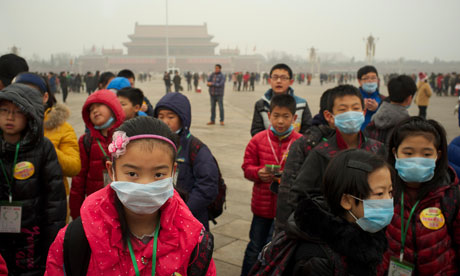 Every once in a while, even now, in the midst of our electronic surroundsound calliope, popular culture can freeze on a moment of some social significance that strikes a collective nerve. For the US this summer it was Ferguson, Missouri. For China, it might just be this last weekend's debut of a documentary about the horrible air pollution that envelopes life in much of that country.
Every once in a while, even now, in the midst of our electronic surroundsound calliope, popular culture can freeze on a moment of some social significance that strikes a collective nerve. For the US this summer it was Ferguson, Missouri. For China, it might just be this last weekend's debut of a documentary about the horrible air pollution that envelopes life in much of that country.
"Under the Dome" is the video manifesto of a Chai Jing, a former Chinese television reporter who didn't give much thought to the brown haze she was breathing, until she was breathing for two.
"Back then, she says, she paid little attention to the smog engulfing much of China and affecting 600 million people, even as her work took her to places where the air was acrid with fumes and dust.
“But,” Ms. Chai says with a pause, “when I returned to Beijing, I learned that I was pregnant."
“I’d never felt afraid of pollution before, and never wore a mask no matter where,” Ms. Chai, 39, says in the video. “But when you carry a life in you, what she breathes, eats and drinks are all your responsibility, and then you feel the fear.”
Her film was posted online Saturday and within just a news cycle or two caused such an uproar and reaction that China's minister of environmental protection compared it to Rachel Carson's “Silent Spring,” the landmark exposé of chemical pollution published in the early 1960's that led to the banning of DDT in the United States. By Sunday afternoon, over 25,000 comments from Chinese citizens had been left at her website, including ones like this that any frustrated downwinder can relate to: “In this messed-up country that’s devoid of law, cold-hearted, numb and arrogant, (her film) is like an eye-grabbing sign that shocks the soul.”
Jing's approach to the material is partly responsible. This isn't a detached observational third-person narrative of the problem. It's her own memoir that uses science and investigative reporting as tools to explore the links between her daughter's benign tumor and the dirty air she believes might have caused it, and so many other health problems. It;s a personal story she probably ould not have told as a member of the official Chinese television news network where she was employed for many years.
We've noted for some time that the most radical environmentalists on the planet aren't Earth Firsters in Colorado, or Greenpeace activists in Europe, but angry Chinese parents, who, over the last decade, have kidnapped the managers of polluting facilities and destroyed whole chemical plants suspected of causing widespread health problems in villages. Undistracted by a mind-numbing, soul-killing regulatory regime like the Texas Commission on Environmental Quality that offers a veneer of control, there's no bureaucratic weapons available to most Chinese citizens when they're being shat on by industry. You either accept it or you don't. Increasingly, when it comes to the harm being imposed on their children, many don't. Especially the mothers.
Take a look at the membership of any front line environmental group. It's populated and administered mostly by women. It was women like Rachel Carson who took on the patriarchy of "modern science" to begin the discussion on environmental health. It was Los Angeles moms in the 1950's who organized the first anti-smog groups and began the modern fight for cleaner air. It was Lois Gibbs, the mother, at Love Canal who committed her own act of kidnapping when she found out her house was built on top of a toxic waste dump. It's women who lead the anti-fracking groups around the country today and here in the Barnett Shale. It's women who founded and make up 90% of Downwinders' board.
Environmental activism may be one of the purest forms of modern feminism there is, both in content and organization. And it's a woman, a mother, who may have once again held up a mirror to a culture, one that hosts a full 6th of the world's population, and asked what the hell are we doing to our species by exposing ourselves to so many obvious poisons.
Worried Much? Gas Industry Desperate to Hold Back Truth and Mansfield Ordinance Reform
 For almost a year, Mansfield residents have been trying to rewrite their city's drilling ordinance to better reflect the science surrounding the public health consequences of heavy industry taking place so close to people. During this entire time, and countless appearances before their city council, there has not been one Mansfield citizen who came forward and defended the current approach.
For almost a year, Mansfield residents have been trying to rewrite their city's drilling ordinance to better reflect the science surrounding the public health consequences of heavy industry taking place so close to people. During this entire time, and countless appearances before their city council, there has not been one Mansfield citizen who came forward and defended the current approach.
But now that the Mansfield council is ready to act on a new ordinance, the gas industry is doing exactly what it's always accusing their opponents of doing, sending outsiders in to invade the town and spread misleading information. And they're doing it in a big, desperate way. Let's just review what's happened in the last couple of weeks:
Industry hired a sleazy push polling firm to conduct a Mansfield campaign by phone that purposely misleads about the impact of the revisions to the ordinance being sought and makes personal attacks on the residents pursuing those revisions.
Sent in trade association speakers from Austin and Fort Worth to Mansfield to further mislead the business community about the revisions being sought.
Set up an e-mail site where industry employees, no matter where they live, send their comments to the Mansfield City Council, in opposition to any revisions.
And last night, (Sunday) the industry released a "study" purporting to show how safe the existing 600 foot setback was in Mansfield.
And these are just the things we know about right now. Having seen the huge multi-well Edge Resources permit get temporarily, but unexpectedly, tabled in January, the industry wasn't about to take any chances on seeing that happening again in their own back yard. So they've thrown everything and the kitchen sink into the Mansfield fight.
Of course, this reaction is a tremendous complement to the efforts of the intrepid Mansfield Gas Well Awareness group, that has, oh who knows, maybe a millionth of the budget the industry has already spent on these efforts. That the gas industry should be so frightened by calls for "responsible drilling" and more protective measures that have numerous precedents in the region tells you all you need to know about their insecurity post-Denton. It's almost comical.
Let's just take the latest effort that the Energy in Depth guys are generously calling a "study." Forget that if an environmental group were offering up such a thing, they'd be the first to point out its obvious bias. But of course, that objection disappears entirely when they fund the results. All of a sudden its a paragon of virtuous objective science. And mind you, these results were funded by the very gas operator who's well emissions are being sampled. No conflict of interest there.
Forget also that they're so proud of this work that they released it on a Sunday, after hours, the day before the Mansfield City Council takes up consideration of a new gas drilling ordinance. It's almost like they wanted to minimize the scrutiny of the thing.
Also put aside that this thing is not peer-reviewed or journal published – because the "science" is so poorly done that it could never pass review and get published in anything but an Energy In Depth blog post.
Also discount the love industry has for for testing levels of contaminants in the air versus its utter contempt for testing people and health. If you're going to claim as your working hypothesis that certain levels of contamination are completely harmless, and that anything that falls below certain levels is benign, then why not put that hypothesis to the test by performing an epidemiological study? But no, you see no such studies coming from industry, because they don't want to test that hypothesis.
One type of study is top, down. It looks at the levels of poisons in the air, and assumes that if they don't exceed the levels deemed dangerous by the regulatory arm of the industry , the Texas Commission on Environmental Quality, then everything must be hunky dory.
The other is bottom-up. It looks at the health of people who live adjacent to the facility releasing the poisons and determines whether their health is worse than those who don't live in close proximity to polluters, whether they are receiving officially sanctioned levels of poisons are not.
The reason the second type of study is a truer snapshot of reality is because we keep finding out that levels of poisons we thought were safe turn out not to be safe at all. Go back even 20 years to the Exide lead smelter in Frisco, or 30 years to the RSR lead smelter in Dallas. Regulators and industry were routinely saying that levels of lead being released by these facilities were "safe." As it turns out, they were not. In fact, science now says there's no level of exposure to lead that cannot do harm to a person, particularly a child.
This learning curve can be applied to many, many types of chemical exposures over the last few decades, including Benzene, and other poisons routinely released by the gas industry. And it's why industry never wants to test its hypothesis about "safe" levels of things in the air with studies of what the actual health of people who live near their facilities is really like.
In reality, the best epidemiological studies to date, those that ARE done by third parties and ARE peer-reviewed an journal published, all conclude that living near gas mining operations increases the likelihood that you'll get sick. That's the state of the science. It's the same kind of science that proved cigarette smoking causes cancer. And that's why industry wants to stick to telling you about how safe the levels of poisons are in the air.
But forget all of that. Let's just take this "study" thing at face value. There was a 100 minutes of sampling of the air in 2012 at a gas pad site before drilling started, and in 2014, there were three 30 minute samplings of air around 600 feet away from the pad site after drilling had begun, and one sampling site well away from the pad to function as a background reading. That's it. That's the entirety of the study: the comparison of this "before" and "after" short term sampling.
Now if you were a high school chemistry nerd looking for a shot in the local science fair, you might insist that the procedures and testing protocol be the same for the before and after sampling. And you'd be right. But this study didn't bother.
In 2012, the sampling looked at Volatile Organic Compounds (VOCs), Sulfur Compounds and Formaldehyde "and other Carbonyl Compounds." In 2014, the sampling only looked at VOCs. so, only one-third of the original 2012 testing was duplicated. You'd think they were trying to intentionally ignore some poisons or something.
But it gets better. There were 15 separate VOCs sampled for in 2012, but only six, (less than half and only barely more than a third), of those were sampled for in 2014. In other words, the 2014 sampling not only left out two-thirds of the 2012 contaminant categories, it left out most of the chemicals in the one category it did sample.
In 2012, you had a total of 100 minutes of sampling of air in the middle of the pad site. In 2014, you had three 30-minute samplings of air 600 feet away from the pad site. They couldn't even replicate the sampling time.
As Texas Sharon has already pointed out, you might want to do your sampling with the same general kinds of weather – circumstances that might promise a representative sample. But no, not for this "study." There was only a trace of rain recorded at the site in 2012, but between half an inch of rain and two and a half inches of rain in the 2014 sampling. Of course, rain being in the air and all, that could affect your air sampling results.
The average wind speed was 6 to 11 mph in 2012, while in 2014, it was, well, the second report really doesn't say what the average wind speed was. It just says that the wind speed varied from 0 to 21 along with wind direction. But who needs details for real science right?
In 2014, none of the background samples were the highest levels of exposure found, that is, the highest readings of all chemicals found were downwind of the pad site.
Of the six VOCs sampled for in both 2012, and 2014, three were significantly higher in 2014.
Benzene was almost 4 times higher in 2014: .13 vs .49.
Toluene was almost three times higher in 2014: .35 vs .91.
Methyl Ethyl Ketones increased by a third: from .53 to .72.
And mind you this was in the rain with gusts up to 21 mph. Only m,p Xylene and Carbon Disulfide were lower in 2014.
In all, these chemicals were detected despite the crappy methodology used:
- Benzene
- Benzene, 1,2,4‐trimethyl‐
- Benzene, 1,3,5‐trimethyl‐
- Benzene, 1,3‐dichloro‐
- Benzene, 1,4‐dichloro‐
- Carbon disulfide
- Carbon Tetrachloride
- Cyclohexane
- Ethane, 1,1,2,2‐tetrachloro‐
- Ethane, 1,1,2‐trichloro‐1,2,2‐trifluoro‐ (Freon 113)
- Ethylbenzene
- Furan, tetrahydro‐
- Heptane
- Methyl Butyl Ketone (MBK)
- Methyl Ethyl Ketone (MEK)
- Methyl Isobutyl Ketone (MIBK)
- Methyl Methacrylate
- Methylene Chloride
- Naphthalene
- o‐Xylene
- m,p‐Xylene
- Styrene
- Tetrachloroethylene
- Toluene
- Trichloroethylene
- Trichloromonofluoromethane (Freon 11)
That's reassuring right? That's what the industry folks are saying, because guess what, they're all at levels below what TCEQ says are OK for you to breathe – for a total of 30 minutes per sample. Unfortunately, most of us have a hard time breaking our habit of breathing all the time. Everyday. For years on end.
Look, you don't need to be a scientist to know how full of holes this slap dash attempt at CYA actually is. Industry is just throwing one thing after another up on the wall and hoping it sticks for the time it takes for the Mansfield City Council to justify its rejection of the citizens' revisions. Especially the 1500 setback originally requested.
Industry keeps saying that this distance amounts to a "defacto" ban of drilling, but that's clearly not the case in Mansfield. It's own literature touts the fact that a rig can be more than a mile away from the gas deposit its mining. You can put a rig in an industrial zoning tract and still reach a pocket of gas underneath a neighborhood without the surface components being anywhere near each other.
So what's the real reason industry oppose these setbacks for heavy industry that would be more than appropriate for any other kind of heavy industry? It's because the gas industry doesn't want to be grouped with lead smelters, and cement plants, and refineries and other kinds of heavy industry. It operates under an industrial exceptionalism that's unique in the modern era. It wants to be viewed as the kindly, well-landscaped heavy industrial polluter. Because when you start seeing it differently, all the carefully-constructed mythology surrounding its operations becomes transparent – just like it did with lead smelters, cement plants and refineries.
Because of its massive infusions of cash and resources overwhelming Mansfield in the last couple of weeks, the industry may indeed forestall the inevitable a little longer in what it considers a jurisdiction that's bought and paid for several times over. But science marches on – the real sort – and it's not going to be very kind to this industry in the longer run. Even the Marlboro Man had to hang up his spurs. It's just a matter of time before this industry is viewed as just another nasty polluting cause of illness, even by those who've benefited from it the most.
